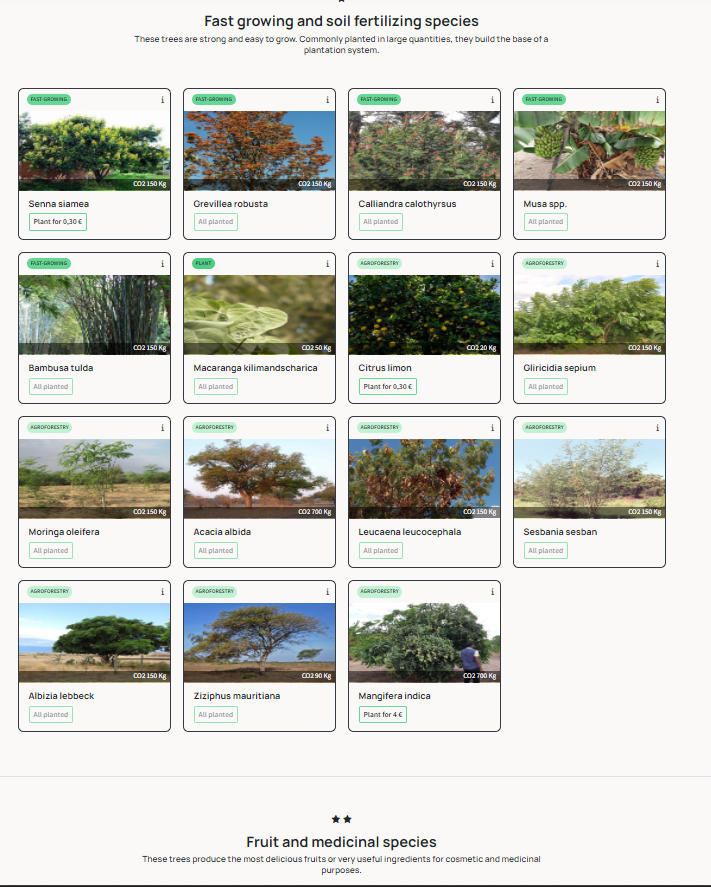Biodiversity in our projects
Do all of the projects listed address the issue of biodiversity loss or do some projects tackle the issue more fully?
By definition, all our projects address the issue of biodiversity loss. This is one of the main purposes behind our mission to reforest the world. Planting trees, if done right, will systematically increase biodiversity.
Each project is unique and we really do not try to create a single apply-all method, on the contrary. Enhancing biodiversity means we allow room for each project to use a large array of options from the planting method to adapt to the social conditions and needs of the local farmers. But in all projects, we usually plant a very large amount of species (the selection will be unique to each project). A project can have more than a hundred species and usually more than 20. Sometimes, like in our project in Nicaragua, you won't see it so much because we display and plant only 5 species. However, those 5 species enhance more than 50 natural species that are already present on-site, within the degraded ecosystem where we plant. The planted species help improve the fertility of the soil, increase its nutrients, and fix the nitrogen from the air into the soil. The result is better conditions for all species to thrive. For all of these reasons and many more, we ensure polyculture (the technical term is analog forest) for each project available on our platform.

To help our public understand that trees are not only about CO2 we have created a label where for each species we highlight one specific benefit. In fact, a species may have more than 30 uses (that we also display within each species' detailed file), but for the sake of making it accessible, we highlight one benefit with our label code. We, for example, show species that help protect the local fauna. In regards to biodiversity, we use the label 'Agroforestry', to regroup species that help creating good agroforestry conditions, help improve the fertility of the soil, and fix the nitrogen. Those species, together with the 'Fast-growing', are usually the first species to plant, the ones that help modify and improve the soil conditions to later welcome the more fragile other species (fruit and medicinal trees for example).
So we can say that all projects tackle the loss of biodiversity. However, this loss of biodiversity may be different from one project to the next. For example in France, the main purpose of our Agroforestry project is to limit the loss of insects by promoting more sustainable agriculture less dependent on chemicals (fertilizers, pesticides) thanks to the re-introduction of trees into an agricultural panorama. In India, we plant in one project some specific species that are the natural habitat of the slender loris, a cute tiny primate that is seeing its habitat shrink.
